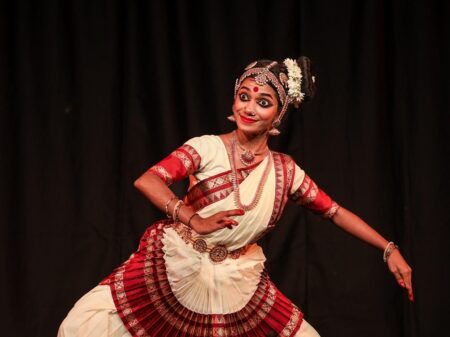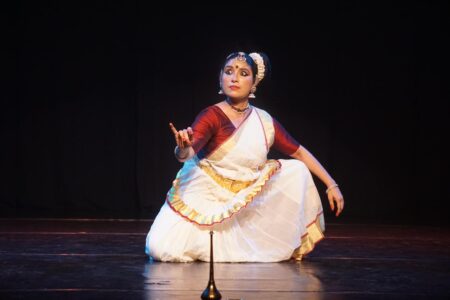Manduka pada is associated to the frog jump. Just like the amphibian qualities of a frog, the philosophical nature in a yogi helps transcend different worlds effortlessly
We started this particular sub-series on padams or footwork with a detailed note on how padams in Mohiniyattam are inspired by our surroundings. As I mentioned in my earlier articles, exploring multiple layers in dance helps dancers and connoisseurs better understand the aesthetics and philosophy of Mohiniyattam.
I was trained by my guru Kalyanikkutti amma in these padams, which are named after real and mythical creatures found either in Kerala or the literature rooted in this geography.
So far, we have explored the beautiful swan movement or the Hamsa Pada,the role of the rooster or Kukkuda Pada and the graceful movement of the peacock and the connotations in its fanned out feathers through Mayoora Pada . Here we explore the beauty of the frog’s leap or Manduka Pada.
Manduka Pada
Sitting in the half-sit position, the dancer stamps one foot while swiftly bending the body quickly down and up and then the same foot is extended forward. She then brings the second foot closer.
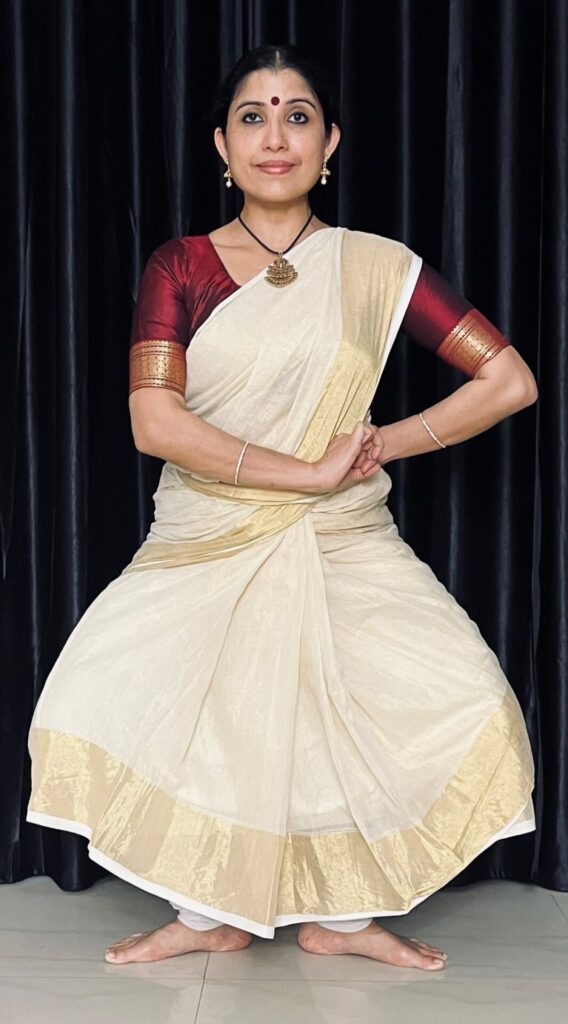
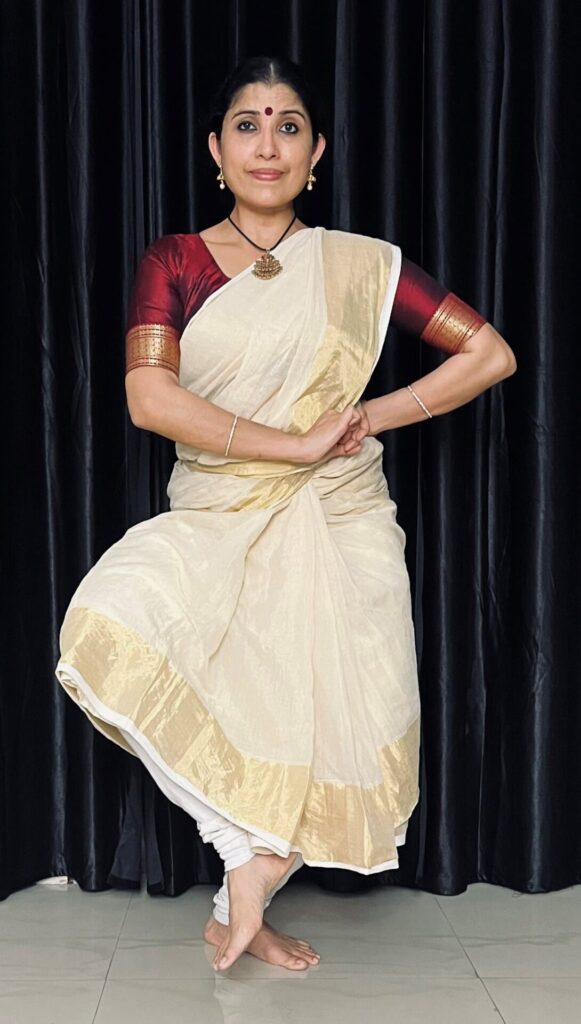
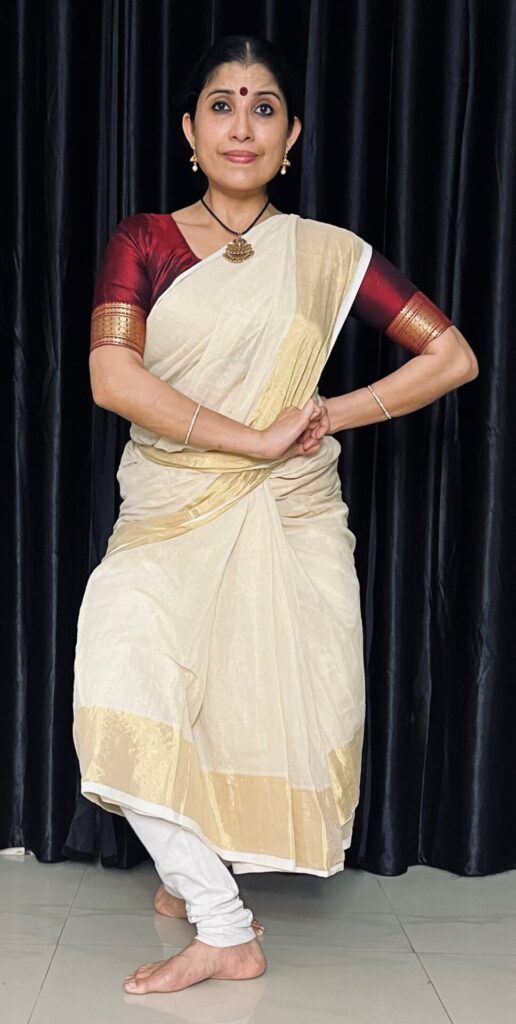
This padam is identified as relating to the frog jump. Frog is an amphibian, it can live in both water and land. In the philosophical realms, a yogi can have a worldly existence while simultaneously existing as a liberated soul. In the Vedanta tradition, Mandukya Upanishad is very famous. Some of the interpretations of the Upanishad is also in connection with the frog.
The state of the mind
There are four states of the mind. Awakened state, sleeping state, dreaming state and liberated state. The last one is possible for the yogis and is often compared to the hibernation of frogs. Yogis in such a hibernation state exist with little movement while having all the senses indifferently open to the surroundings. There is also a yogasana in this name – the Mandukasana. This asana is recommended for focussing the mind while assuming the static posture like that of a frog.
A dancer can find relevant comparisons to these interpretations. Like a frog swiftly moving from land to water and back, a dancer should have the ability to adapt to different emotions of the characters he/she is portraying. This is an important characteristic of sathwika abhinaya. Acting can achieve its purpose of evoking the rasa in the audience, only when the actor identifies with the character. Otherwise merely becomes an imitation. But the actor should not enter a trance state by forgetting his/her real existence.
Assisted by Sreekanth Janardhanan

Photo courtesy: Natanakairali archives
Write to us at [email protected]



